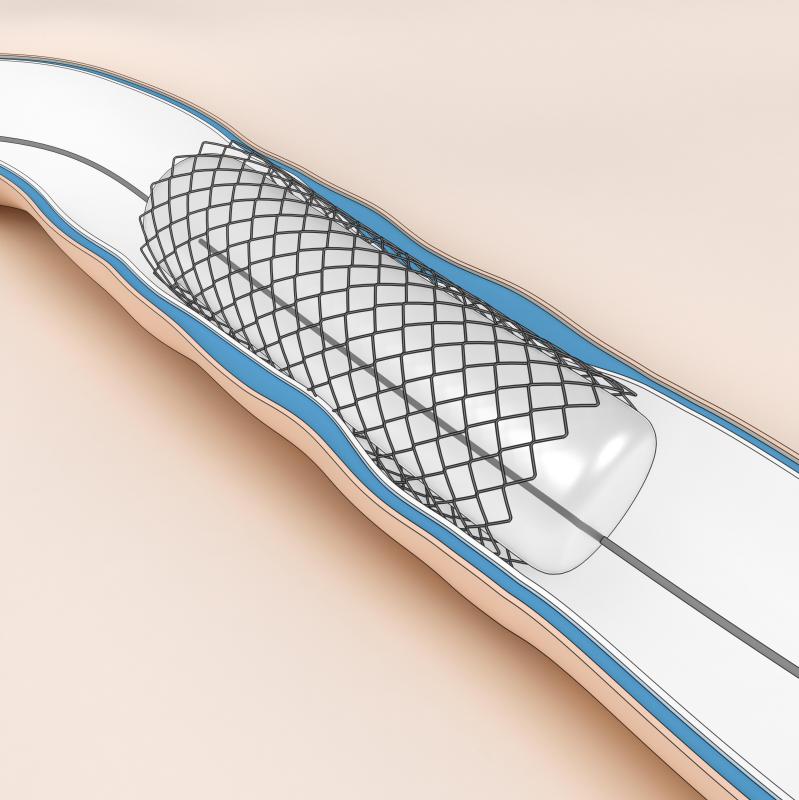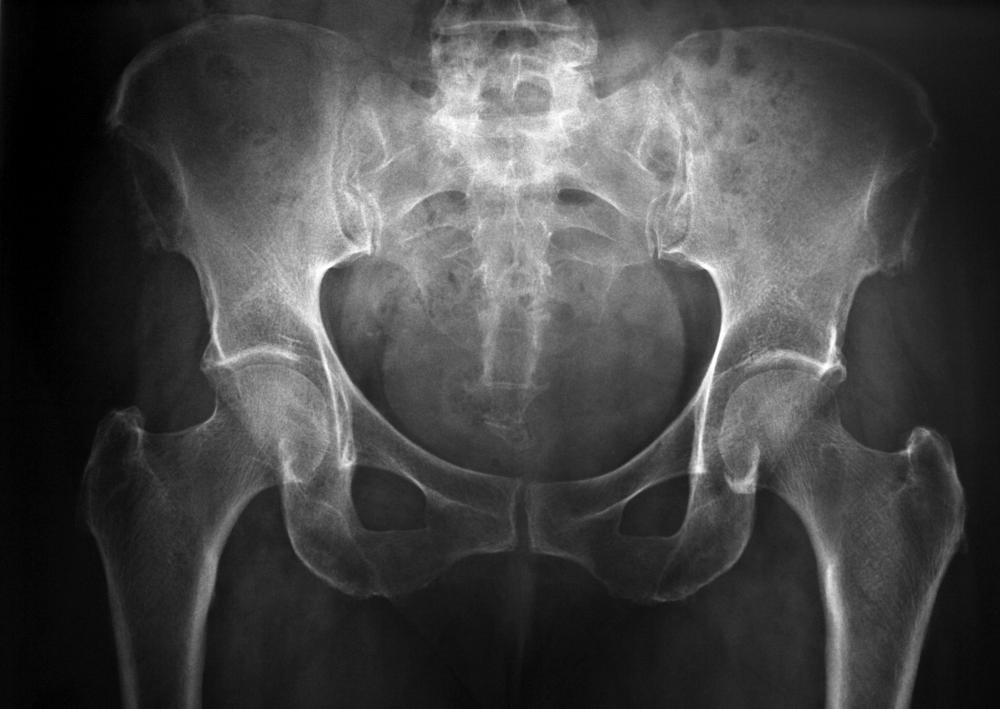At TheHealthBoard, we're committed to delivering accurate, trustworthy information. Our expert-authored content is rigorously fact-checked and sourced from credible authorities. Discover how we uphold the highest standards in providing you with reliable knowledge.
What is a Ureteric Stent?
A ureteric stent, or ureteral stent, is a hollow drainage tube placed temporarily in the ureter to prevent blockage of the kidney and aid urine flow. A ureteric stent is made of plastic. The length of an adult sized ureteric stent ranges from about 9-12 inches (24 to 30 cm). It comes in different sizes to fit different size ureters.
Normally, urine is formed in the kidney and is piped to the bladder by the ureter. Blockage may occur when a kidney stone is trapped in the ureter as urine makes its way from the kidney to the bladder. Kidney stone blockage may be caused by previous operation on the urinary system, which scarred the inner lining of the ureter and narrowed the passageway. Blockage also can be attributed to prostate tumors compressing the ureter.

Kidney blockage can be detected in patients experiencing a feeling of tiredness, loss of appetite, and even sickness. This is caused by salts collecting in the bloodstream which are normally removed from the body by the kidney. Difficulty urinating may cause a buildup of urine in the kidneys, leading to infection and organ damage. While doctors determine the cause of the blockage, a temporary ureteric stent is inserted to restore urine flow and relieve pressure.

A patient is placed under general anesthesia during stent placement. A urologist installs the ureteric stent by inserting a small telescopic tube called a cystoscope through the urethra and into the bladder. The stent is then threaded through the cystoscope and placed into the ureter and kidney. An X-ray is taken to make sure the stent has been placed correctly. If not, it will be removed and repositioned. The stent will remain as long as it takes to discover and treat the cause of blockage.

During the time in which a patient has a ureteric stent, he/she may experience certain side effects. These include increased frequency in urination, irritation during urination, a feeling of urgency to urinate, a feeling of incomplete emptying of the bladder, blood in the urine, risk of urinary tract infection, and/or a stone encrusting the stent. Stents with a heparin coating may reduce the chances of infection. Side effects can be minimized by drinking 4 pints (1.5 to 2 liters) of fluid every day. The first few days after stent insertion, patients may feel pain in the pelvis and kidney after urinating. This is normal and may decrease in a few weeks.

Patients with a ureteric stent can continue sexual activity, but oftentimes a stent comes with a thread that helps its removal. The thread passes through the urethra and hangs outside the body. The thread may cause irritation in some patients. More importantly, stents with a thread can make it difficult to have sex. Consult a doctor before engaging in activities that might dislodge the stent. Most patients are able to carry on normal physical activities.
AS FEATURED ON:
AS FEATURED ON:

















Discussion Comments
A stent was placed in the ureter five weeks ago. It has caused discomfort in my legs, groin, and a bearing down feeling between my legs. Constant trips to the bathroom, with little to no control over the bladder.
Will this disappear when the stent is removed.
I was given no information about possible side effects, and not informed this would be inserted before my operation.
I would like to know if anybody else has experienced this, and if literature is given out in some hospitals. In my opinion, this would help alleviate a lot of anxiety, caused by not knowing.
Post your comments